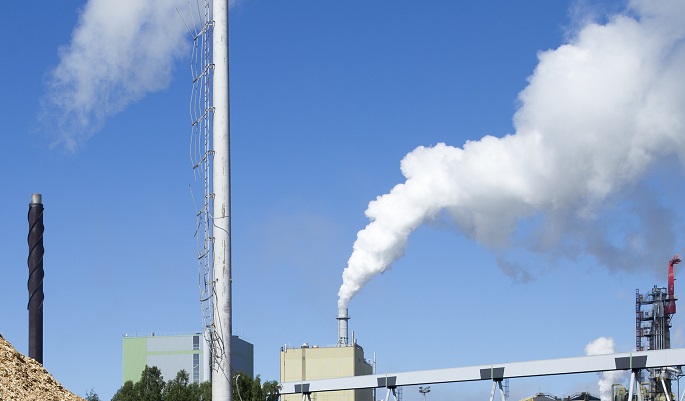Finland needs more actions to meet carbon neutrality target
Published : 15 Jul 2023, 02:40
Finland’s target of carbon neutrality in 2035 requires additional measures, according to the Annual Climate Report submitted to the Parliament by the government on Friday.
There are several uncertainties involved in achieving the goal and the available measures, and the fulfilment of the emission reduction obligation also depends on future policy decisions, said the Ministry of the Environment in a press release, referring to the report.
Country’s greenhouse gas emissions decreased by about 4% in 2022 and pursuant to the Finnish Climate Change Act, emissions must be reduced by 60% by 2030, using 1990 as the baseline.
In 2035, emissions should be in balance with sinks and based on current estimates, this target is possible to achieve by talking additional measures in this regard.
The land use sector was a minor carbon sink and according to the report, additional measures are needed particularly to strengthen the carbon sink of the land use sector to enable the achievement of the Finnish land use sector’s obligation set at the EU level.
The achievement of the Finnish effort sharing sector’s obligation set at the EU level is also uncertain.
The government reports annually to the Parliament on the development of Finland’s emissions and progress towards emission reduction targets. Emissions and sinks are reported for the emissions trading sector, effort sharing sector and land use sector.
In 2022, the land use sector again became a minor carbon sink. The land use sector was a net source of emissions for the first time in 2021, which means it generated more emissions than it sequestered.
The land use sector refers to land use, land-use change and forestry (LULUCF). Forests and soil are the most significant carbon sinks in the land use sector.
The size of the forest carbon sink varies substantially from one year to the next, but the sink has declined significantly over the past few years.
The weak development of the net sink of the Finnish land use sector is attributable to increased forest harvesting, the slowing of forest growth and the increased soil emissions from peatlands.
Forest harvesting levels are affected by the demand for forest products and energy wood, as well as the importing of wood from other countries.
In accordance with EU law, fulfilment of the obligations is monitored in five-year periods. The achievement of the EU obligation would require the land use sector’s net sink to be significantly larger than it currently is.
It is estimated that, for the first five-year period (2021–2025), Finland will report a deficit of tens of millions of tonnes relative to the obligation.
The effort sharing sector’s emissions decreased by 3% in 2022 when compared to 2021. Nevertheless, emissions from transport and agriculture – which are the largest sources of emissions in the sector – were largely unchanged from the previous year.
Other significant sources of emissions in the effort sharing sector include the heating of buildings, as well as non-road mobile machinery and waste management.
In the effort sharing sector, Finland’s obligation agreed upon at the EU level is to reduce emissions by 50% by 2030. Examples of the measures aimed at reducing transport emissions include the fuel distribution obligation and accelerating the electrification of transport.
Slightly less than half of Finland’s total emissions are generated by the emissions trading sector, mainly energy production and large industrial installations.
The emissions trading sector’s emissions decreased substantially in 2022, by 6% in total. Changes in energy use were the most significant reason for the reduction in emissions. The consumption of natural gas halved due to rising natural gas prices and the discontinuation of Russian imports.
The implementation of measures to reduce emissions in the emissions trading sector are driven by the rebasing of the EU’s emissions ceiling and the price of emission allowances.
As a rule, entities that are within the scope of emissions trading must pay for the emissions they generate by purchasing the corresponding number of emission allowances. The emissions ceiling established in emissions trading in the EU determines the number of emission allowances in the market, with the number decreasing from one year to the next.
The rapid phasing out of fossil fuels in electricity and heat production will be accomplished in the coming years.
The rate of emission reductions in the emissions trading sector may also be faster than anticipated. Investments in the green transition are accelerating, and the transition is expedited by the high price of emission allowances.
To promote climate change adaptation, 24 targets extending to 2030 have been set at the national level in Finland.
The targets and the measures specified to support their achievement are presented in the National Climate Change Adaptation Plan. The implementation of the Adaptation Plan has already begun in certain respects.
Measures to support climate change adaptation in agriculture are outlined in Finland’s CAP Strategic Plan under the EU Common Agricultural Policy. The plan extends to 2027. In addition, a number of adaptation-related actions – including the control and restriction of pests of plants and animal diseases, and breeding plants for climate resistance – are carried out through national measures.
Several projects and studies were carried out and initiated in the area of climate resilient forestry. The management of drought risks was developed as part of the national effort to manage flood and drought risks.
This is the fifth Annual Climate Report. This year’s Annual Climate Report describes the status of the implementation of climate policy as it stood in spring 2023. The policies outlined in the new Government Programme have not been taken into account in the report.


